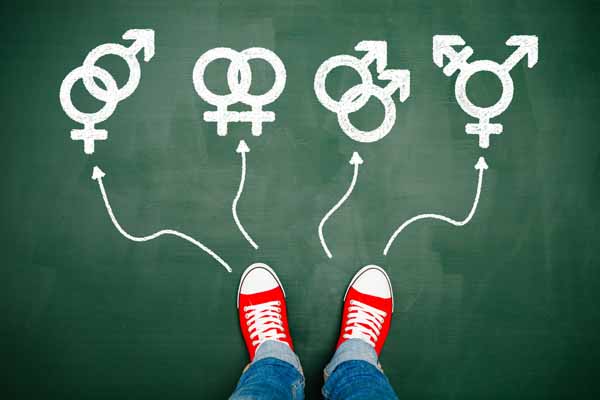
Editor’s note: Recent events in Texas have shone a spotlight on gender-affirming care and its impact on young people who identify as being gender diverse and transgender. This resource from the Texas Medical Association’s LGBTQ Health Section answers common questions about gender-affirming care and what it means for patients and physicians.
What does it mean when someone is gender diverse?
To be gender diverse means the person’s gender identity, expression, or even perception does not conform to the norms and stereotypes others expect.
What is gender dysphoria?
Gender dysphoria is the feeling of discomfort or distress felt in some whose gender identity differs from the sex assigned to them at birth.
Are all young people who are gender diverse also gender dysphoric?
No. Some people can identify as gender diverse and feel at ease with their bodies. They don’t feel any need for medical intervention.
Do all young people who are gender diverse also identify as transgender?
No. People are typically considered transgender only when gender diverse traits remain persistent, consistent, and insistent over time. It’s very common for young people to at first question their gender identity and then, as they age, feel more comfortable with the sex they were assigned at birth. When that happens, they frequently are no longer considered gender diverse.
What is the purpose of gender-affirming care?
Gender-affirming care is developmentally appropriate care that meets all gender diverse and transgender patients where they are in understanding their gender identity. Most importantly, this gives young people time and space to explore their gender identity in a nonjudgmental environment. In most cases, it does not involve medication and it never involves gender-reassignment surgery for young people under age 18.
How is gender-affirming care carried out?
A physician starts by asking the patient in a nonjudgmental way how they identify in terms of gender. If someone says they identify in a way that isn’t consistent with the sex they were assigned at birth, the physician follows up by asking, “Is there another name you would like to use?” Or, “Are there different pronouns that would make you feel more comfortable so that we can put you at ease and talk about this more?” A 2018 University of Texas at Austin study showed that physicians who follow these steps alone can improve gender-diverse youth’s mental health significantly. They can alleviate the depression many transgender young people feel and reduce suicidal thinking.
When are medicines used in gender-affirming care?
In some cases, young people feel gender dysphoria so significantly that medicines are needed for the treatment. The decision to use them typically is made in a long-term relationship between a physician and the patient’s family. These discussions also may include a psychiatrist, a therapist, and sometimes a school counselor, and they come only after a thorough multidisciplinary assessment.
What medicines are used?
In some cases, physicians use puberty blockers to pause puberty temporarily and allow the patient to gain a better understanding of themselves and their gender identity. The blockers help keep these young people from feeling even more dysphoric – and potentially anxious or suicidal – because of irreversible physical changes such as a dropping voice or growing breasts. These are the same puberty blockers used to treat precocious puberty in patients who are cisgender – those whose personal identity matches their sex assigned at birth.
What happens after puberty blockers are used?
Health care professionals closely monitor these young people, physically and psychologically. While these young people are on puberty blockers, their family members and health care team carry on a conversation about the next steps.
What are the next steps?
The patient’s family faces a choice: either remove the puberty blockers and allow the young patient’s body to develop in the sex they were assigned at birth, or use prescribed hormones to achieve gender transition. This is often a very difficult choice for families to make.
Are these steps reversible?
The effects of puberty blockers are completely reversible once the medication is no longer used. The changes caused by hormones are sometimes reversible but in other cases they’re not. For instance, if someone grows breasts, the breasts will not shrink after the hormones are withdrawn.
Is gender-reassignment surgery ever used for those younger than age 18?
No. Surgery is never used for gender reassignment among young people. Only adults can use this option. In some cases, people under age 18 have chest reconstruction surgery due to dysphoria caused by breasts.
Is gender-affirming care the evidence-based standard of care?
Yes. More than 20 years of scientific evidence show this is best way to care for young patients with gender dysphoria.